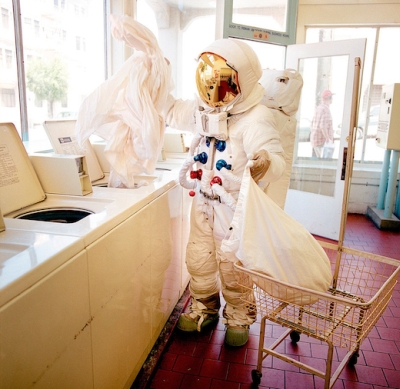
Le Corbus: Roaring Space Age
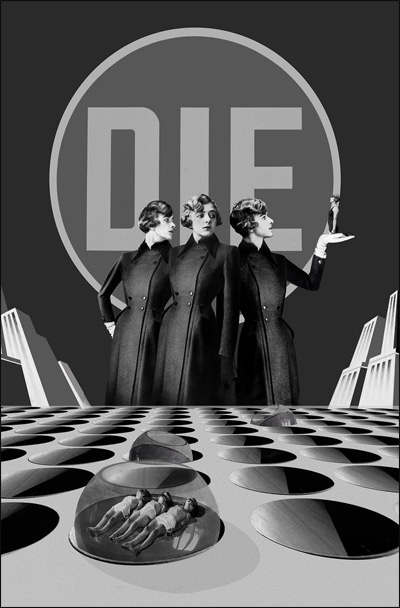
Elegant finger waves, glass domes, cookie-cutter craters, robots and skyscrapers. What does it all mean? Collage artist Le Corbus‘ striking red/grey palettes, obliquely sinister themes and uncanny retro-future juxtapositions feel like a perfectly-blended mix of punk collage artist Winston Smith, anti-Fascist photomontage artist John Heartfield and Soviet propaganda poster master El Lissitzky. More from when the ’20s met the ’60s, after the jump.
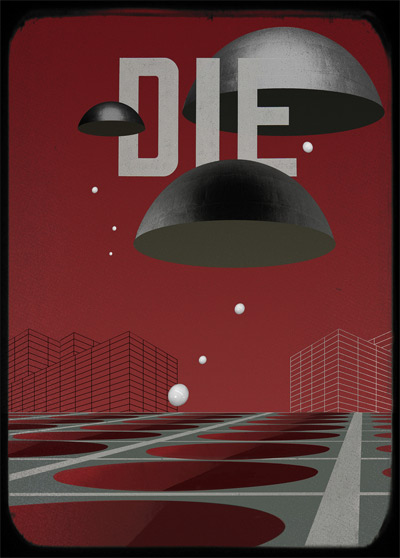


The Protomen: Space Avengers From Nashville
Nerdcore. Chiptune. Gamewave. Bands Influenced by Video Games. It’s almost a given that we, as People of the Web, have heard at least one track we can assign to this genre. With MC Fronalot, Anamanaguchi, and Minibosses among the names at its forefront, this movement is a love letter to all things nerdy and wonderful. The Protomen may be lesser-known than some of the aforementioned folks right now, but not for long.
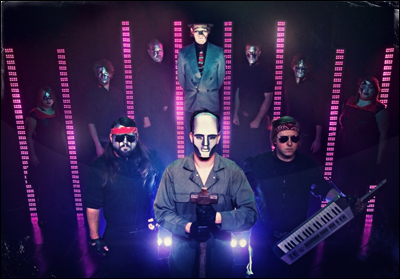
No, not for long.
Panther, the lead vocalist, is joined by a cast of nine, who, in his words, “noticed a void in rock and roll. A hole that could only really be filled with grown men and women painting up like robots and playing some fierce and furious rock music based on a 1980s video game.” Having just released their second album, the Nashville-based, Mega Man-inspired, silver-painted space cowboys [and girls] have been on a national tour since summer, and if you have the chance, you should definitely check ’em out. These guys are young, hilarious, and they’re damn good.
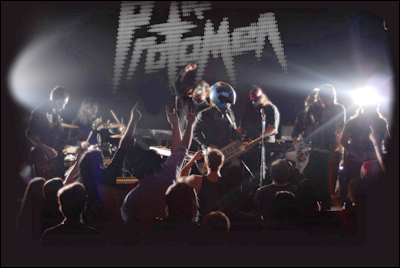
Despite all the tight production and shiny web design, this band is meant to be experienced live. As the countless performance clips on YouTube prove, you can expect some form of a mosh pit, costumes, eager audience participation, theatrics and a whole lot of RAWKK. Also, the odd Journey cover, or better yet, Clap Danzatar, a Pat Benatar and Danzig mash-up which must be heard to be understood. Simply put, if you like things like rock operas, video games, or fun, and can tolerate a little retro-worship, do yourself a favor and get into The Protomen. This fan-made video for Unrest in the House of Light, a track off their first album, is a good place to start.

New 06 Fundraising Coilhouse Merch is HERE.
Here’s the haps, comrades. We’re halfway through production on Issue 06 of Coilhouse Magazine. In recent days, as we watch its aesthetic and themes begin to coalesce, our conference calls have gotten giddier than ever. As always, we’re aiming for maximum high gloss, high concept, high impact. However, Coilhouse remains a labor of love with marginal profit, and right now our funds are rather low. Why? Because the recently-produced Issue 05 cost us an arm and a leg. NO REGRETS. But its many frills (the holographic foil, the fold-out poster, the art postcards) have left us with depleted resources.
We don’t want to refrain from pulling out all of the stops for 06 in the same manner we did for 05, 04, 03. But to ensure we keep outdoing ourselves with each successive issue, it’s looking like we may need a little help from our friends. Are you willing and able? That’s where this new wave of Coilhouse merchandise comes in.
We’re introducing several new clothing designs and styles, as well as buttons, a mug, and a poster. Yum yum yum. As you can see, it’s all a bit retro sci-fi Constructivist space cadet-chic. That’s not a coincidence! The look and feel of these items dovetails nicely into Issue 06’s themes (as you’ll soon see). We’re also bringing back limited quantities of the beautiful black-on-black INFORM INSPIRE INFECT hoodie that sold out almost instantly a few months ago.
Additionally, now that we’ve mailed off all of the contributor and advertiser copies of Issue 05, we can sell the remaining stock to our readership. If you missed 05 the first time around, or still haven’t had any luck finding it in a store near you, now’s your chance.
This round of merch is Pre-Order: meaning, you buy it, we get it manufactured, and you get your shipment about 3 weeks from now. Pretty good deal, no? You get a lovely item that you can wear proudly, or sip hot toddies out of, or frame and hang on the wall, knowing you supported Coilhouse when we needed a boost. And we get to ensure that Issue 06 stays as badass n’ fancy as it wants to be.
Click through to check out all of the goodies. As always, thank you for your support of Coilhouse Magazine + Blog.


BTC: “I’m just burning doin’ the neuTRON dance.”
Hurrrrr, neuTRON dance… geddit? (Via BarbieHead, reigning Coilhouse clan queen of Disney trivia/ephemera.)
It’s 1985. It’s Disneyland. It’s the Main Street Electrical Parade. It’s the Pointer Sisters performing their hit single “Neutron Dance”. It’s two dozen exuberant jazz dancers in Tron leotards. It’s a gargantuan glowing mushroom. It’s a spinning, leering, ten-foot-tall bumblebee thingummer about to annihilate the Pointer sister furthest to the right (look closely– you can see the terror in her eyes). It’s a blinking, zigzagging caterpillar conga line. It’s Pete’s friggin’ Dragon farting up the joint. It’s… it’s full of stars? No, wait, it’s just another Monday morning cultural acid flashback, and we all head off to work singin’ “I’m on fiiiiiighYAH!” (Woo hoo!)

Umbra
Malcolm Sutherland’s strange sci-fi short Umbra: the tale of a space man who finds himself on a strange, yet seemingly familiar, planet. Sutherland uses his chosen medium to great effect, achieving a complex range of emotions using rather simplistic characters. Combined with a sparse, haunting soundtrack by Alison Melville and Ben Grossman, it makes for a great five minutes.

The Mundane Lives Of Space Men
I can’t say I’m necessarily a huge fan of the entirety of Hunter Freeman’s portfolio, but I do very much love this series of photos of an astronaut going about his or her day; my favorite being the bored, newspaper reading individual above. It strikes me as the sweet spot of juxtaposition between far out adventure and the everyday.
via Cgunit

Arthur C. Clarke’s 1964 Predictions for Today
BBC’s Horizon is a philosophical and scientific series that still runs today. Its opening episode in 1964 featured Coilhouse patron saint, Buckminster Fuller, along with the program’s mission statement:
The aim of Horizon is to provide a platform from which some of the world’s greatest scientists and philosophers can communicate their curiosity, observations and reflections, and infuse into our common knowledge their changing views of the universe.
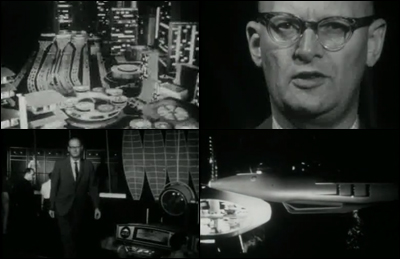
Later that year, science fiction author Arthur C. Clarke was invited to share his visions of the future. Some are scary, warning us of the world becoming a giant suburb – right up there with the terror of Idiocracy, which still gives my nightmares. Some are encouraging, though yet-unrealized. My favorite speculations include: domed communities on icecaps, holidays under the sea, planetary engineering, and my top favorite remains recording directly onto the brain [please, yes?].
Though we’re running out of time to camp on either of the Poles, who’s to say at least some of us won’t be vacationing on the Moon in a fifty years? After all, Clarke’s prediction of us communicating instead of commuting was dead on, cryogenics are in full swing, and The Replicator exists, if only as 3D printing and spimes, for now. Watch the segment below in two parts, then see also:
- Mark Roth Talks About Suspended Animation
- David Forbes’ All Tomorrows posts
- Ray Bradbury (Reluctantly) Sells Prunes of the Future
- Fashion – 2000 A.D.
[Thanks, Disinfo]

BRVTAL KNITS by Tracy Widdess
Behold. Fodder from the most über Tumblr you’ll see all day:

Via Heather Thompson. HAIL.
Tracy Widdess is currently accepting custom orders for her sublime horror and sci-fi inspired knitwear, but queue up quick! Undoubtedly, she’s about to be inundated with weirdos clients.

More images after the jump.


The FAM: Memories: Episode 1: Magnetic Rose
In memory of Satoshi Kon, The FAM presents Katsuhiro Otomo’s Memories (1995), specifically the first episode of three entitled Metallic Rose, directed by Koji Morimoto and written by the late Mr. Kon. Metallic Rose tells the story of a space-faring salvage team who respond to a distress signal (in the form of a recording of Puccinni’s opera Madame Butterfly) emanating from a giant space station in a particularly dangerous area of the galaxy known as Area RZ-3005 or Sargasso. The ship’s two engineers, Heintz and Miguel, are deployed to investigate. Inside they find an opulent, rococo interior and a woman claiming to be an opera singer named Eva Friedal.
The true nature of Eva is something I won’t spoil, but it is safe to say that she is not exactly who she appears to be. Magnetic Rose then, in sci-fi shorthand, is a mash-up of the used, dingy, space-trucker aesthetics of Alien and the psychological mindfuckery of Solaris; and it succeeds admirably. And while it was based on a story by Otomo, it contains many of the themes that would define Kon’s work: the interest in the protagonist’s mental state and subjective reality. Two years later he would go on to write and direct his first feature film, Perfect Blue, and a brilliant career; but the seeds were sown here in the span of 40 minutes. If only that career could have lasted a little longer.





